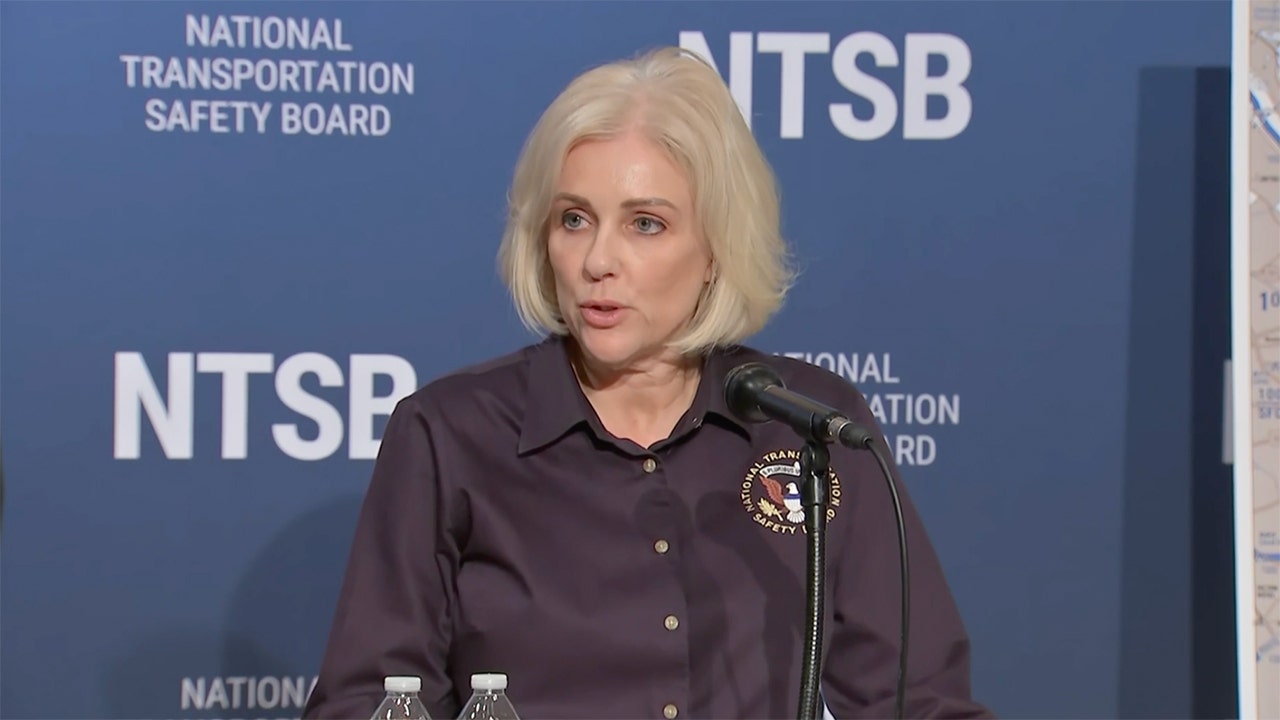United States
Black Hawk crew may not have heard message to ‘pass behind’ DC-bound plane before midair crash: NTSB

On January 29, a tragic midair collision occurred near Ronald Reagan Washington International Airport, resulting in the loss of 67 lives. The crash involved an Army Black Hawk helicopter and an American Airlines passenger plane, with no survivors. Officials have confirmed that the Black Hawk crew may not have been aware they were flying too high and possibly missed critical messages from air traffic control prior to the fatal accident. The incident happened during an Army “flight check,” raising questions about communication, altitude monitoring, and the potential for equipment malfunction.
During a press conference, National Transportation Safety Board (NTSB) Chair Jennifer Homendy revealed that critical radio transmissions from air traffic control, sent just seconds before the collision, may not have been fully received by the Black Hawk crew. The cockpit voice recorders (CVR) from the helicopter captured a transmission directing the crew to “pass behind” the passenger plane, but the message appears to have been cut off. A 0.8-second mic key from the Black Hawk’s crew interrupted the transmission, suggesting the crew was attempting to communicate with air traffic control at the same time. This overlap may have caused the crew to miss the vital instruction. Furthermore, the NTSB noted that the Black Hawk was flying at a radio altitude of 278 feet, which was too high, but the crew’s barometric altimeters may have displayed a different reading, creating conflicting information. Homendy emphasized that the agency is investigating whether the crew saw different data in the cockpit compared to the flight data recorder (FDR), which relied on radio altimeter readings.
The NTSB is also examining the role of the Black Hawk’s automatic dependent surveillance broadcast (ADS-B) system, which is designed to prevent traffic conflicts by estimating spacing and separation between aircraft. However, the system was not transmitting during the flight, raising questions about whether it was turned off, malfunctioning, or improperly programmed. This has prompted a thorough review of the equipment and its performance. Additionally, Homendy highlighted visibility concerns, as the Black Hawk crew was likely wearing night-vision goggles throughout the flight. These goggles, while useful in low-light conditions, may have limited their ability to see the approaching passenger plane against the bright backdrop of the airport. The NTSB is conducting a visibility study to determine what the crew could have seen in the moments leading up to the collision.
The NTSB’s investigation has revealed that the Black Hawk crew did not appear to react audibly to the impending collision, as recorded by the CVR. This suggests that they were unaware of the danger until it was too late. The instructor pilot had interpreted a transmission from air traffic control as a request to move left toward the east bank of the Potomac River, but this instruction may not have been sufficient to prevent the collision. The conflicting altitude data and potential communication issues further complicate the picture, leaving investigators to piece together the sequence of events and identify the root causes.
As the investigation continues, the NTSB is assessing multiple factors, including the performance of the ADS-B system, the accuracy of altitude readings, and the impact of night-vision goggles on the crew’s visibility. Homendy stressed that the agency will take the time needed to thoroughly analyze all aspects of the crash, ensuring that no potential contributing factor is overlooked. The findings of this investigation will be critical not only for understanding the circumstances of this tragic event but also for improving aviation safety measures to prevent similar accidents in the future.
The crash has left 67 families grieving, and the nation is eager for answers. While the NTSB’s investigation is still ongoing, the initial findings suggest a combination of communication errors, potential equipment issues, and environmental factors may have contributed to the tragedy. The case underscores the complexity of aviation safety and the importance of robust communication systems, accurate data, and clear visibility for pilots. As the NTSB works to uncover the full truth, the hope is that this incident will lead to meaningful changes that save lives in the future.


















